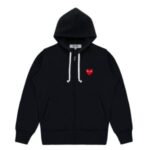The Sandakphu Phalut Trek is one of the most breathtaking adventures in India, offering mesmerizing views of the four highest peaks in the world—Everest, Kanchenjunga, Lhotse, and Makalu. Nestled in the Singalila National Park, this trek takes you through dense forests, charming villages, and panoramic ridges that make every step worth the effort. But let me tell you, trekking at high altitudes is no joke! The weather changes in minutes, the terrain is demanding, and without the right gear, this dream trek can quickly turn into a nightmare.
I made some mistakes on my first trek—overpacking unnecessary items while missing out on essentials. After learning the hard way, I’ve put together this ultimate packing list to ensure you’re well-prepared for an amazing and hassle-free Sandakphu Phalut trek. If you want to trek like a pro, here are the 10 must-have essentials that will make your journey comfortable, safe, and enjoyable!
1. My Lifesaver: Sturdy Trekking Shoes For Sandakphu Phalut Trek
If there’s one thing you cannot compromise on, it’s your trekking shoes. Sandakphu’s trails are a mix of rocky paths, uneven terrain, muddy stretches, and sometimes even snow. Without proper trekking shoes, you’ll struggle with slipping, sore feet, and painful blisters. I saw a few trekkers wearing regular sneakers, and by the end of the first day, they were limping, frustrated, and regretting their choices.
The right trekking shoes should be sturdy, water-resistant, and provide a firm grip. Make sure they have ankle support to prevent injuries and a cushioned insole for comfort during long walks. A well-fitted pair of shoes will keep your feet happy, and trust me, that’s the most important thing on a trek. I personally used Quechua’s trekking shoes, and they were a lifesaver—keeping my feet dry, warm, and blister-free throughout the journey. So, invest in a good pair, and you won’t regret it!
2. The Secret to Staying Warm: Layered Clothing
The biggest mistake I made on my first trek? Not dressing in layers. The weather at Sandakphu changes faster than you can imagine. One moment, the sun is blazing, and the next, you’re shivering in freezing winds. If you’re not prepared, you’ll end up feeling uncomfortable and miserable. The best way to handle these sudden weather changes is by wearing layered clothing, which allows you to add or remove layers as needed.
A good layering system consists of three key parts. The base layer (thermal wear) helps retain body heat, the middle layer (fleece or down jacket) provides insulation, and the outer layer (windproof and waterproof jacket) protects you from rain, wind, and snow. I remember reaching Phalut early in the morning when it was biting cold, but thanks to my thermal innerwear and fleece jacket, I was warm and comfortable. Also, don’t forget trekking pants, gloves, and a woolen cap—these small additions can make a huge difference!
3. My Trusty Backpack (With a Rain Cover!)
A bad backpack can ruin your trek. Imagine walking for hours with a backpack that digs into your shoulders or keeps slipping off—sounds painful, right? A well-fitted, comfortable, and spacious backpack is crucial because it carries everything you need for the trek. After struggling with an uncomfortable bag once, I now always choose a backpack that is lightweight, durable, and has adjustable straps.
For the Sandakphu Phalut Trek, a 40-50L backpack is ideal for carrying clothes, food, water, and other essentials. If you’re hiring a porter, you can use a small daypack (20L) for quick access to essentials like water, snacks, and a camera. One thing you absolutely must have? A rain cover. The weather here is unpredictable, and you don’t want to walk around with a soaked backpack. Trust me, a good backpack with a rain cover makes all the difference in keeping your trek hassle-free!
4. Sleeping Bag: The Key to a Cozy Night
At higher altitudes, nights get freezing cold. While the tea houses provide blankets, they aren’t always warm enough, and you might end up shivering all night. That’s why I always carry my own sleeping bag, rated for at least -5°C to -10°C. It provides warmth, hygiene, and comfort that no borrowed blanket can match.
During my trek, I saw some trekkers struggle with cold, sleepless nights, while I was snuggled up in my sleeping bag, warm and comfortable. If you’re someone who gets cold easily, a sleeping bag liner is also a great addition. Don’t make the mistake of relying on tea house blankets alone—bring your own cozy sleeping bag and sleep like a baby!
5. The Magic of Trekking Poles
I used to think trekking poles were unnecessary—until I actually used them. The Sandakphu trek involves steep ascents and descents, and after just a few hours of trekking, my knees and legs were crying for relief. That’s when I realized the true power of trekking poles.
Trekking poles help reduce strain on your knees, improve balance on uneven terrain, and save energy during long climbs. If you don’t want to feel like your legs are going to collapse at the end of the day, bring a lightweight, adjustable trekking pole. I started using one on my second trek, and let me tell you—it made a huge difference in my overall comfort and stamina.
6. Water: The Ultimate Fuel
Dehydration at high altitudes can lead to altitude sickness, dizziness, and fatigue. The biggest mistake trekkers make? Not drinking enough water. The air is dry, and you lose moisture faster than you realize. That’s why I always carry a 2L water bottle and refill it from streams along the way.
Since natural water sources may not always be safe, I also carry water purification tablets and ORS packets. Trust me, when you’re exhausted from trekking, a sip of ORS-infused water feels like magic! Stay hydrated, and your body will thank you.
7. First Aid Kit: Because Anything Can Happen
Blisters, cuts, headaches, altitude sickness—you never know what might happen on a trek. That’s why a first aid kit is a must. Mine always includes band-aids, antiseptic cream, painkillers, altitude sickness medicine (Diamox), and anti-allergy pills.
During my trek, a fellow trekker got a bad blister, and luckily, I had band-aids and antiseptic cream to help her out. Always carry a basic first-aid kit, because you never know when you (or someone else) might need it!
8. Headlamp: The Unsung Hero of Night Treks
One thing many trekkers forget? A headlamp. And I was one of them—until I had to walk to the washroom at night in pitch darkness, with only my phone flashlight. It was annoying, unreliable, and drained my phone battery fast. That’s when I realized the true value of a headlamp.
A good-quality headlamp keeps your hands free while trekking early in the morning or moving around the tea houses at night. Since electricity is limited at higher altitudes, you can’t rely on charging stations. A headlamp with extra batteries ensures you have reliable light whenever you need it. Whether you’re navigating a rocky trail before sunrise or simply looking for your socks in your backpack, a headlamp is a game-changer!
9. High-Energy Snacks: Fuel for the Trek
Trekking burns a lot of calories, and sometimes, the tea houses don’t serve food exactly when you need it. I remember feeling super hungry between breakfast and lunch but had to wait for a meal stop. Thankfully, I had some energy bars and dry fruits in my backpack, which kept me going.
Packing high-energy snacks like dry fruits (almonds, raisins, walnuts), protein bars, dark chocolate, and glucose powder can be a lifesaver when you need a quick energy boost. These snacks are lightweight, nutritious, and don’t take up much space, making them perfect for trekking. Whether you need an extra boost during a steep climb or something to keep your energy up in the cold, having these snacks handy is a must!
10. Sun Protection: Because the Sun is Stronger Than You Think
Most people assume cold weather means less risk of sunburn, but that’s a big mistake. The higher you go, the stronger the UV rays become. I skipped sunscreen one day, and by the evening, my face was red and peeling. It was painful and completely avoidable!
To protect yourself from sun damage, pack:
✅ Sunglasses with UV protection (to prevent snow blindness)
✅ Sunscreen (SPF 50+) (apply every few hours)
✅ Lip balm with SPF (to prevent cracked lips)
Even if it’s cloudy, don’t forget sunscreen. UV rays can still burn your skin through the clouds, and wind can dry out your lips fast. Trust me, a few simple sun protection items can save you a lot of discomfort later!
Final Thoughts: Pack Smart, Trek Happy!
Packing for the Sandakphu Phalut Trek is all about balance. You want to carry enough to stay comfortable and safe, but not so much that your backpack becomes a burden. With these 10 essential items, you’ll be well-prepared to handle the unpredictable weather, long trekking hours, and high-altitude challenges with ease. I had an amazing experience trekking with The Searching Souls on the Sandakphu Phalut Trek. Their team was professional, knowledgeable, and incredibly helpful, making sure everything—from food to acclimatization—was taken care of. If you want to enjoy this trek without any stress, definitely go with them!
So, get your gear ready, lace up your trekking shoes, and embark on this once-in-a-lifetime adventure. See you on the trails! 🏔️
Frequently Asked Questions (FAQs)
1. What is the best time to trek Sandakphu Phalut?
The best time is Spring (March-May) for rhododendron blooms and Autumn (October-December) for clear views of the Himalayan peaks.
2. Do I need a guide for the Sandakphu Phalut trek?
It’s possible to do the trek solo, but hiring a guide or porter is highly recommended for safety, navigation, and a hassle-free experience.
3. Is there mobile network coverage on the trek?
Network availability is limited. BSNL and Jio work in some places, but don’t rely on it—expect long stretches without signal.
4. Can beginners attempt this trek?
Yes! The moderate difficulty level makes it suitable for beginners with basic fitness and preparation.
5. How cold does it get during the trek?
Temperatures can drop to -5°C or lower, especially in Phalut during winter, so warm clothing is essential.




